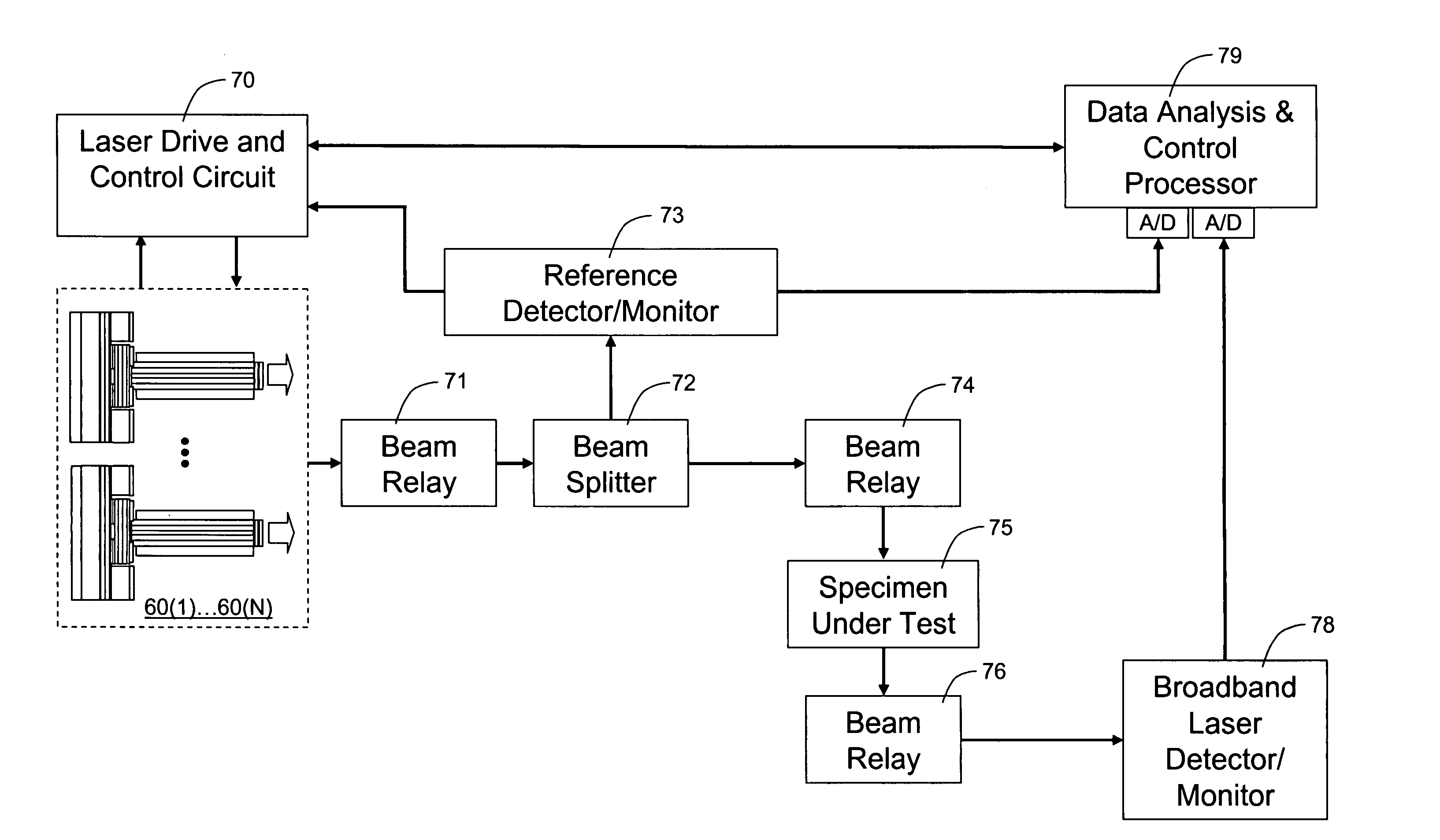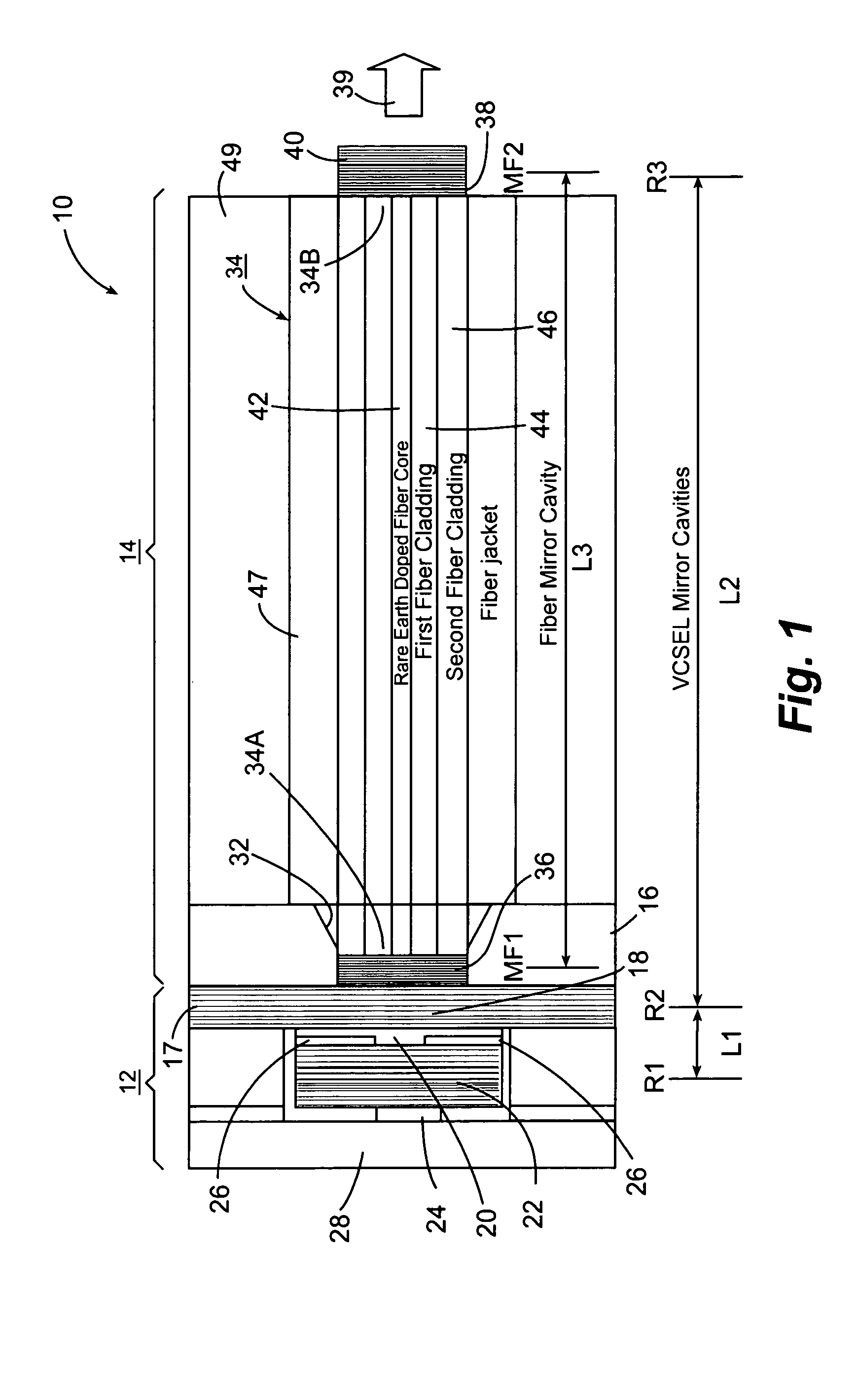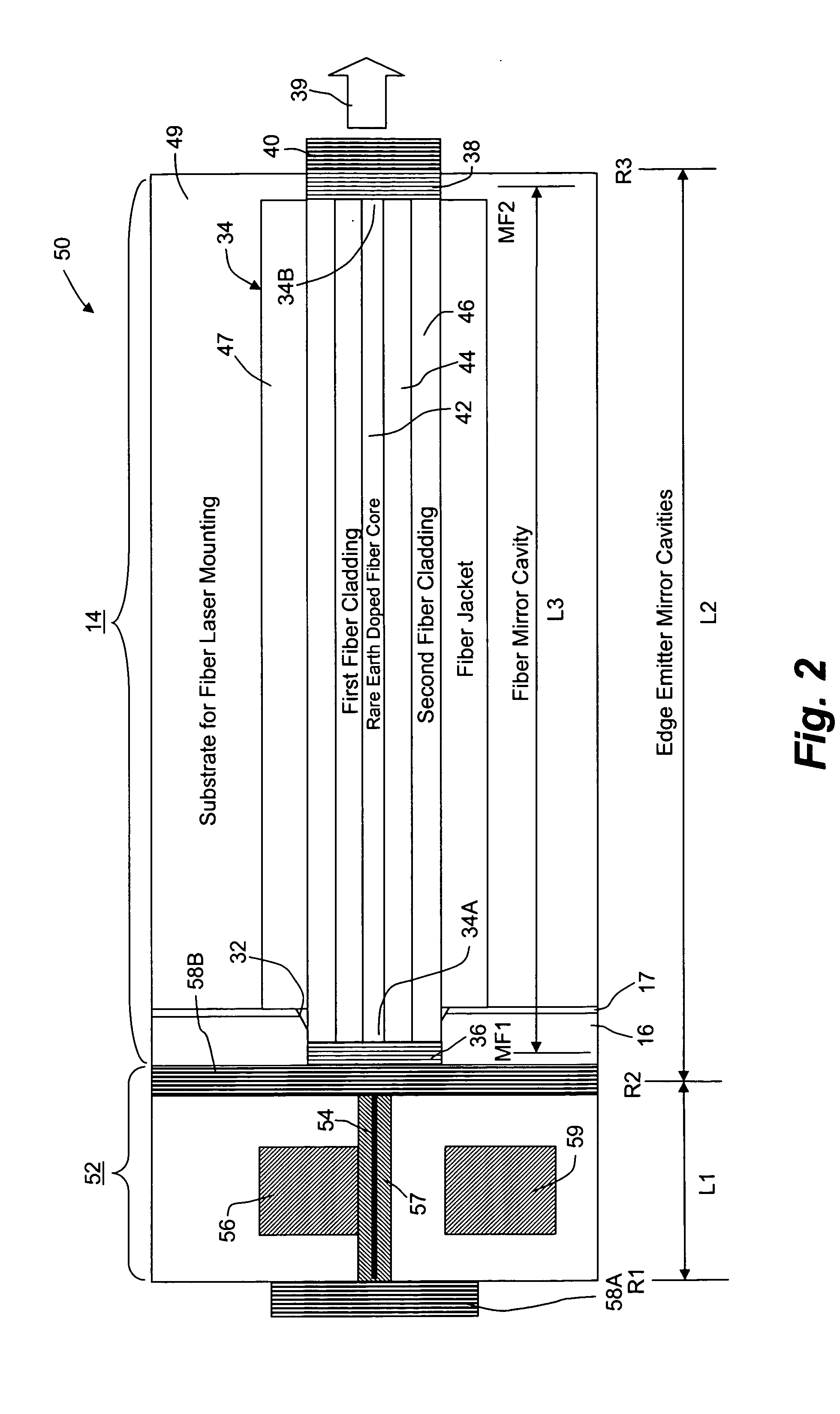Optical spectroscopy apparatus and method for measurement of analyte concentrations or other such species in a specimen employing a semiconductor laser-pumped, small-cavity fiber laser
a fiber laser and optical spectroscopy technology, applied in the field of optical spectroscopy, can solve the problems of inability to achieve real reliable results, and inability to accurately determine one analyte from another, etc., to achieve the effect of short physical path length, weak fiber absorption, and increased absorption efficiency of pump laser radiation
- Summary
- Abstract
- Description
- Claims
- Application Information
AI Technical Summary
Benefits of technology
Problems solved by technology
Method used
Image
Examples
Embodiment Construction
[0034] As used herein, “small cavity” fiber laser means a comparatively very small laser cavity compared to fiber lengths generally employed for fiber lasers in the art. Typical fiber lengths for the VCSEL-pumped small cavity fiber laser employed in this invention may lie in the range, for example, from about 0.5 cm to about 10 cm, although the fiber length may also lie outside this range. The concentration for the dopant species may be in the range from 1,000 ppm to 30,000 ppm and typical inner core diameters of the fibers may be in the range from about 3 μm to about 10 μm, although it will be appreciated that the dopant concentration and the fiber core diameter may also lie outside these ranges. Also, as used herein, “spectral characteristic feature” means a minimum, zero or maximum of wavelength variation of an optical characteristic along at least a portion of the characteristic optical spectrum of an analyte under examination. An optical characteristic feature may include absor...
PUM
| Property | Measurement | Unit |
|---|---|---|
| length | aaaaa | aaaaa |
| emission wavelength spectral ranges | aaaaa | aaaaa |
| wavelengths | aaaaa | aaaaa |
Abstract
Description
Claims
Application Information
 Login to View More
Login to View More - R&D
- Intellectual Property
- Life Sciences
- Materials
- Tech Scout
- Unparalleled Data Quality
- Higher Quality Content
- 60% Fewer Hallucinations
Browse by: Latest US Patents, China's latest patents, Technical Efficacy Thesaurus, Application Domain, Technology Topic, Popular Technical Reports.
© 2025 PatSnap. All rights reserved.Legal|Privacy policy|Modern Slavery Act Transparency Statement|Sitemap|About US| Contact US: help@patsnap.com



